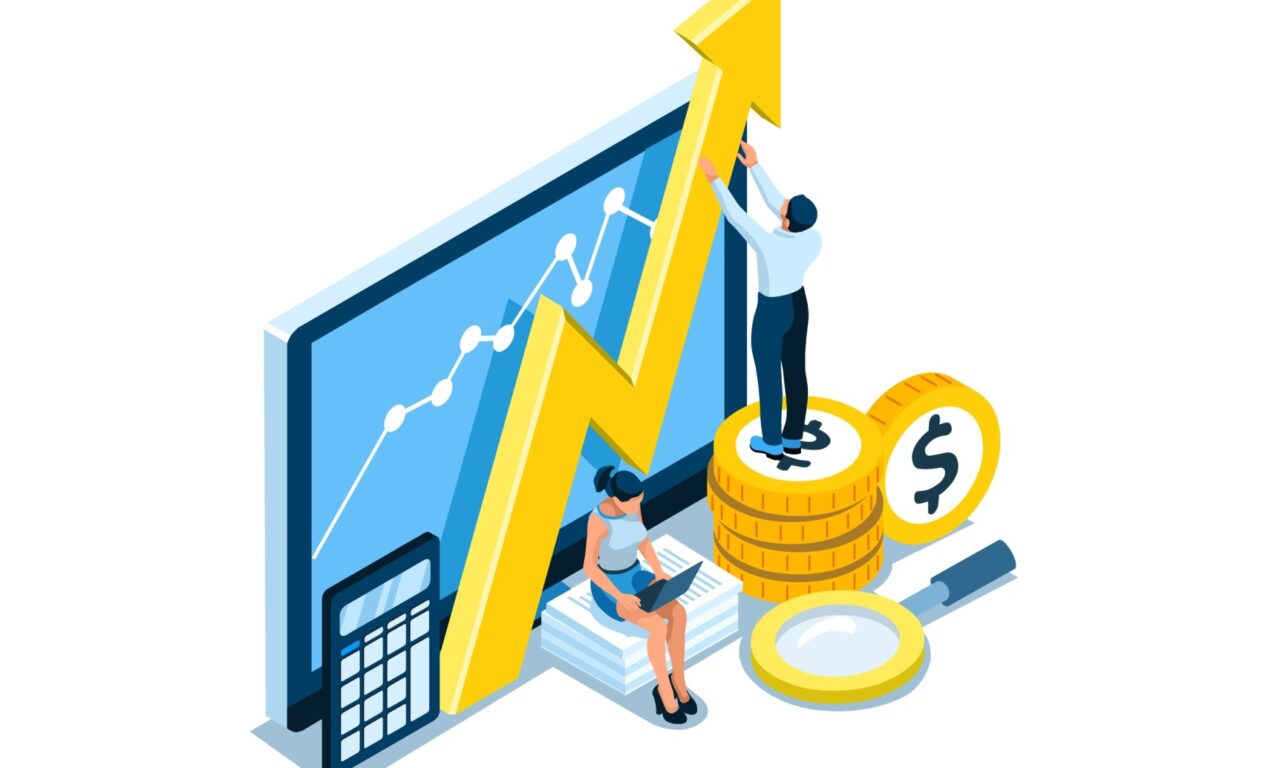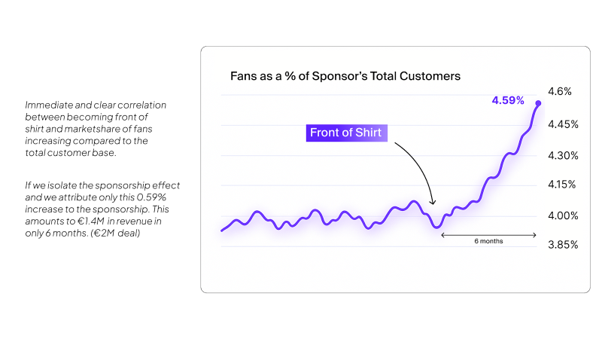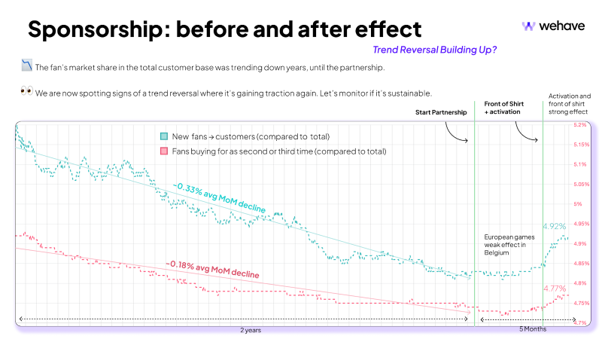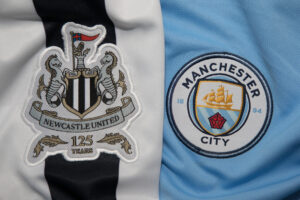Beyond impressions: Measuring sponsorship ROI in real sales

Sponsorship ROI. It’s the one thing that matters most to a CFO and the one thing the sponsorship industry has struggled to prove for decades.
For decades, return on investment in sponsorship has been defined in terms of visibility. Logo impressions, media equivalency scores, brand recall. All are useful in their own right, but all are limited when used to prove sponsorship ROI. They tell us where the brand was seen, not whether it changed anything.
So what happens when the Finance Director asks a simple but uncomfortable question: how does this sponsorship impact our top line?
That’s the challenge Belgian start-up wehave.io has set out to solve. And after speaking with Co-Founder Oliver Wolfs, it’s clear the company is doing more than just tinkering at the edges. It’s offering a radically more tangible way to understand sponsorship impact using real-world sales data.
From overlap to outcomes
At the heart of Wehave’s model is a simple concept: track the actual customer spend a sponsorship delivers.
The platform works by securely matching first-party data sets between a sponsor and a rights holder. Comparing customer databases and fan data, hashed and encrypted for privacy, can determine not just whether a fan becomes a customer, but how valuable that customer is over time.
“We’re not estimating,” Wolfs explains. “We don’t do multipliers. We only report on what we can prove, exact matches between fan and customer and what those conversions are worth.”
In one example with Belgian Pro League side Anderlecht, a partner was able to show 9,000 new customers within 18 months, directly traceable to the club’s fan base. The estimated value of those conversions was €7 million.

These aren’t survey results or modelled estimates. While there are other more holistic approaches to sponsorship ROI, such as those outlined by Brand Finance and Nielsen, Wehave's is the only approach that provides hard sales data.
Loyalty, retention, and reactivation
The power of Wehave’s approach doesn’t stop at acquisition. Because the platform has access to actual customer behaviour, it can also track loyalty and long-term engagement.
Fans acquired through sponsorships tend to behave differently. Wehave’s data continually shows that they are not only more likely to convert, but also more loyal and more valuable. “In many cases, fans had higher lifetime value than non-fans,” Wolfs says. “They stayed longer, spent more, and were more active.”

Sponsorship ROI graph
That insight opens the door to more intelligent activation too. Sponsors can use the data to target dormant accounts within the fanbase, and re-engage them with targeted loyalty campaigns, redeeming offers, serving tailored ads, or even offering matchday incentives to bring them back.
It transforms sponsorship from a brand visibility play into a precision marketing tool.
Sponsorship ROI and why media value isn't enough
The contrast with traditional media value equivalency (MVE) is stark. While MVE can assign a dollar figure to the exposure a brand receives, it can’t say whether that exposure led to any commercial outcome.
That disconnect is becoming increasingly difficult to justify, especially in a down market.
“As budgets come under pressure, the CFO doesn’t want to see brand heatmaps,” Wolfs says. “They want to see revenue. If sponsorship can’t prove it delivers that, it’s one of the first things to be cut.”
That rings true for many in the industry. In our conversation, Wolfs described multiple recent cases where brand managers were “delighted” just to have data they could finally take to the boardroom. Even a conservative, provable sponsorship ROI number, what Wolfs calls the “worst-case value” is better than another deck full of unverified impressions.
A start-up born from the problem
Remarkably, Wehave.io is less than two years old. Wolfs co-founded the business after spotting a huge gap in the sponsorship market: brands were spending millions without any way to know what they were getting in return.
The breakthrough came during a conversation in a football hospitality box. “They told me, ‘We think the sponsorship’s working because business is good but we can’t prove how,’” he recalls. That single conversation kicked off a journey that led to Wehave recently securing a €1,000,000 investment to expand further.
The bottom line
Wehave isn’t trying to replace media value. Instead, it’s offering something that’s been missing for too long: proof.
By showing actual conversions and real revenue from sponsorship activity, it gives both sponsors and rights holders a language the boardroom understands and, critically, the ammunition they need to protect and grow budgets.
Subscribe to The Sponsor for more practical sponsorship tips and expert insights.









